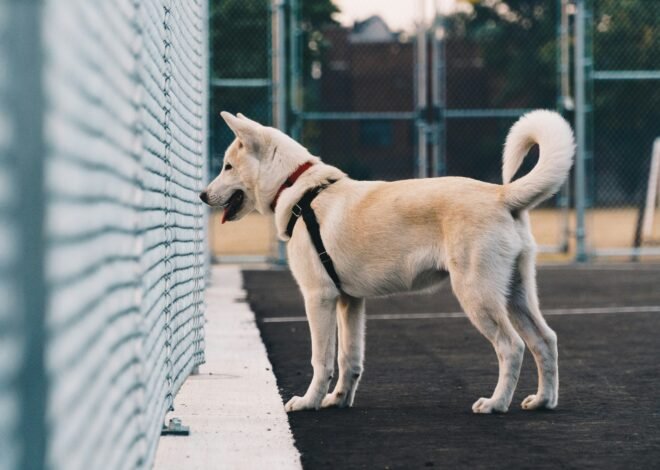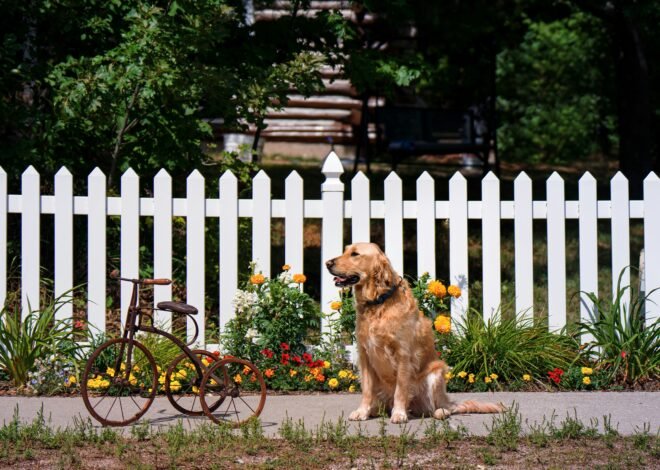
Low Cost, Low Budget Dog Fence Plans
Keeping Your Pet Safe Without Breaking the Bank
Ensuring the safety of your dog is a top priority for any pet owner. However, installing a dog fence can often be a significant expense. The good news is that you can create a secure and functional dog fence on a budget. This article will explore various low-cost , inexpensive dog fence plans that are easy to implement, effective, and won’t strain your wallet.
Assessing Your Needs
Before diving into the specifics of low-budget dog fences, it’s important to assess your needs:
- Size of the Area: Measure the area you want to enclose. The size of the area will influence the amount of material you need and the overall cost.
- Dog’s Size and Behavior: Consider your dog’s size, breed, and behavior. Some dogs may need a taller fence, while others might require a more sturdy solution if they tend to dig or chew.
- Local Regulations: Check local zoning laws and regulations regarding fence installation to ensure compliance.
Low-Cost Dog Fence Options
- DIY Mesh Fence
A DIY mesh fence is one of the most cost-effective solutions. Here’s how you can create one:
Materials Needed:
- – Metal or wooden stakes
- – Mesh or chicken wire
- – Zip ties or wire
Buy these here
Steps:
- Mark the Perimeter: Use stakes to mark the perimeter where you want to install the fence.
- Install Stakes: Drive the stakes into the ground at regular intervals (about 6-8 feet apart).
- Attach Mesh: Unroll the mesh or chicken wire and attach it to the stakes using zip ties or wire. Ensure the bottom of the mesh is flush with the ground to prevent your dog from slipping underneath.
Cost Estimate: Depending on the size of the area, this can cost anywhere from $50 to $150.
- Pallet Fence
Using wooden pallets is a great way to recycle materials and create a sturdy fence at a low cost.
Materials Needed:
- – Wooden pallets
- – Nails or screws
- – Hammer or drill
Steps:
- Collect Pallets: Source free pallets from local businesses, warehouses, or recycling centers.
- Prepare the Area: Clear the area where you want to install the fence.
- Install Pallets: Stand the pallets upright and secure them together using nails or screws. For added stability, you can bury the bottom edge of the pallets slightly into the ground.
Cost Estimate: If you can find free pallets, the cost will be mainly for nails or screws, making it as low as $20 to $50.
- Snow Fence:
A snow fence, typically used to control snow drifts, can double as an affordable dog fence.
Materials Needed:
- – Snow fence
- – Metal or wooden stakes
- – Zip ties or wire
Steps:
- Mark the Perimeter: Use stakes to mark the area where the fence will be installed.
- Install Stakes: Drive the stakes into the ground at regular intervals.
- Attach Snow Fence: Unroll the snow fence and attach it to the stakes using zip ties or wire.
Cost Estimate: Snow fences can be purchased for about $30 to $60, depending on the length required.
- Electric Fence Kit
Electric fences can be a cost-effective and efficient way to keep your dog within a certain area. Modern electric fence kits are designed to be safe and easy to install.
Materials Needed:
- – Electric fence kit (includes wire, transmitter, and flags)
- – Shovel
Steps:
- Plan the Layout: Determine where you want the boundary to be.
- Install the Wire: Lay the wire according to the kit instructions, either above ground or buried.
- Install the Transmitter: Connect the wire to the transmitter and set it up in a sheltered location.
- Train Your Dog: Use the training flags and follow the manufacturer’s instructions to train your dog to understand the boundaries.
Cost Estimate: Electric fence kits can range from $100 to $200.
Additional Tips to Save Money
- Use Recycled Materials
Utilize recycled materials whenever possible. For example, old wooden boards, unused metal stakes, or leftover mesh from previous projects can be repurposed for your dog fence.
- Buy in Bulk
If you need to purchase materials, consider buying in bulk. This can often reduce the per-unit cost and save money in the long run.
- DIY Installation
Labor costs can significantly increase the overall expense of installing a fence. By doing the installation yourself, you can save a substantial amount of money. There are plenty of online tutorials and guides that can help you with the process.
- Temporary Solutions
If you’re not ready to commit to a permanent fence, consider temporary solutions like portable pet fences. These can be set up quickly, moved as needed, and are typically less expensive.
Maintaining Your Low-Cost Fence
- Regular Inspections
Regularly inspect your fence for any signs of wear and tear. Repairing small issues promptly can prevent more significant problems and extend the life of your fence.
- Proper Anchoring
Ensure that your fence is properly anchored to prevent it from being knocked over by wind or your dog’s activity.
- Reinforcements
If you notice any weak spots, reinforce them with additional materials like extra mesh or stakes to ensure the fence remains secure.
Conclusion
Creating a secure environment for your dog doesn’t have to be expensive. With some creativity and effort, you can build a low-cost dog fence that meets your pet’s needs and fits your budget. Whether you choose a DIY mesh fence, a pallet fence, a snow fence, or an electric fence, there are plenty of options available to ensure your dog stays safe and happy without breaking the bank. By using recycled materials, buying in bulk, and opting for DIY installation, you can further reduce costs while providing a safe and secure space for your furry friend. More Innovative DIY Dog Fence Ideas!


